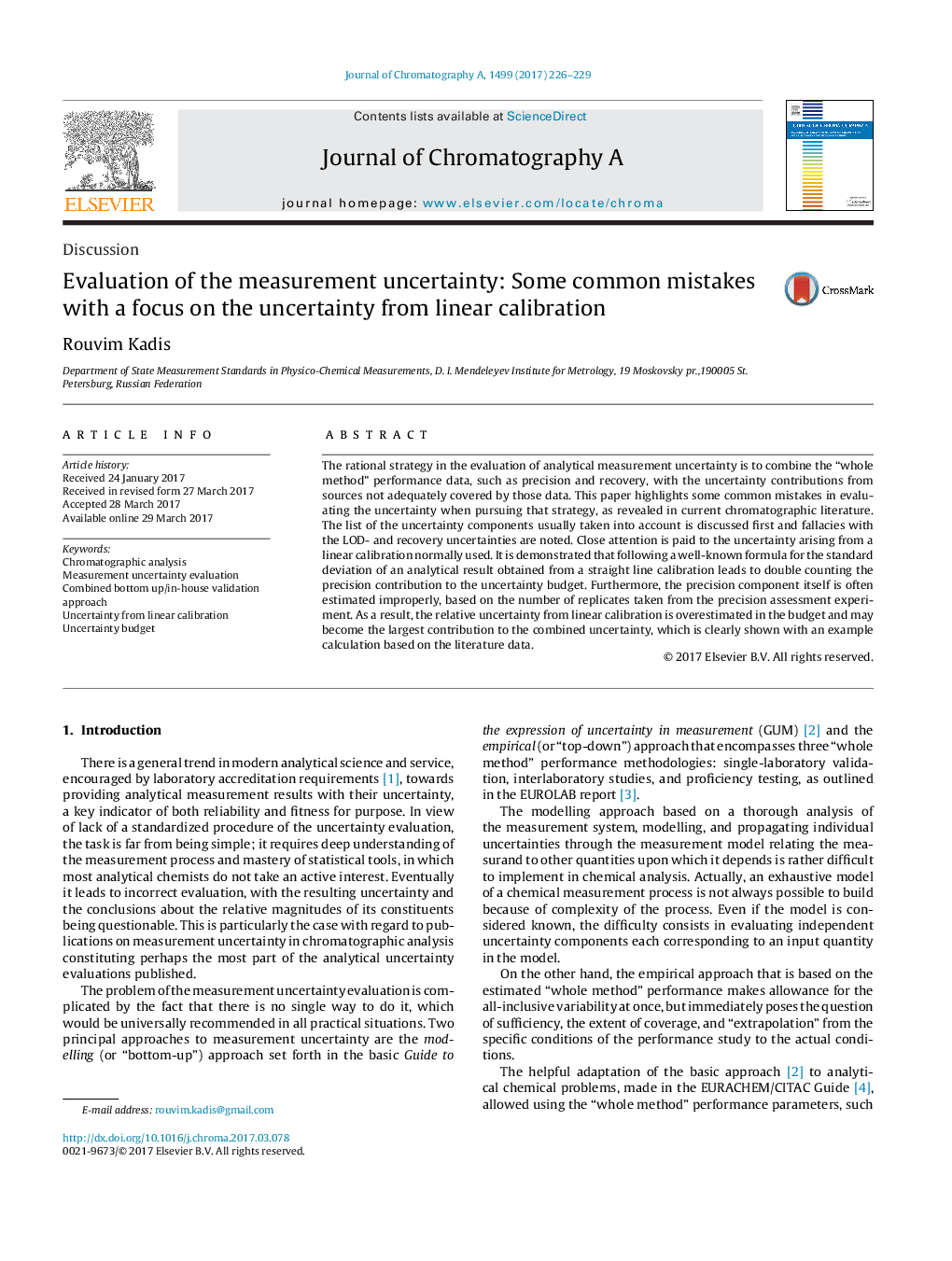| Article ID | Journal | Published Year | Pages | File Type |
|---|---|---|---|---|
| 5135186 | Journal of Chromatography A | 2017 | 4 Pages |
â¢Analysis of uncertainty evaluations in the current chromatographic literature.â¢Fallacies with the LOD- and recovery uncertainty components.â¢Overestimation of the uncertainty from linear calibration because of double counting.â¢Illustrative example of calculation.
The rational strategy in the evaluation of analytical measurement uncertainty is to combine the “whole method” performance data, such as precision and recovery, with the uncertainty contributions from sources not adequately covered by those data. This paper highlights some common mistakes in evaluating the uncertainty when pursuing that strategy, as revealed in current chromatographic literature. The list of the uncertainty components usually taken into account is discussed first and fallacies with the LOD- and recovery uncertainties are noted. Close attention is paid to the uncertainty arising from a linear calibration normally used. It is demonstrated that following a well-known formula for the standard deviation of an analytical result obtained from a straight line calibration leads to double counting the precision contribution to the uncertainty budget. Furthermore, the precision component itself is often estimated improperly, based on the number of replicates taken from the precision assessment experiment. As a result, the relative uncertainty from linear calibration is overestimated in the budget and may become the largest contribution to the combined uncertainty, which is clearly shown with an example calculation based on the literature data.
